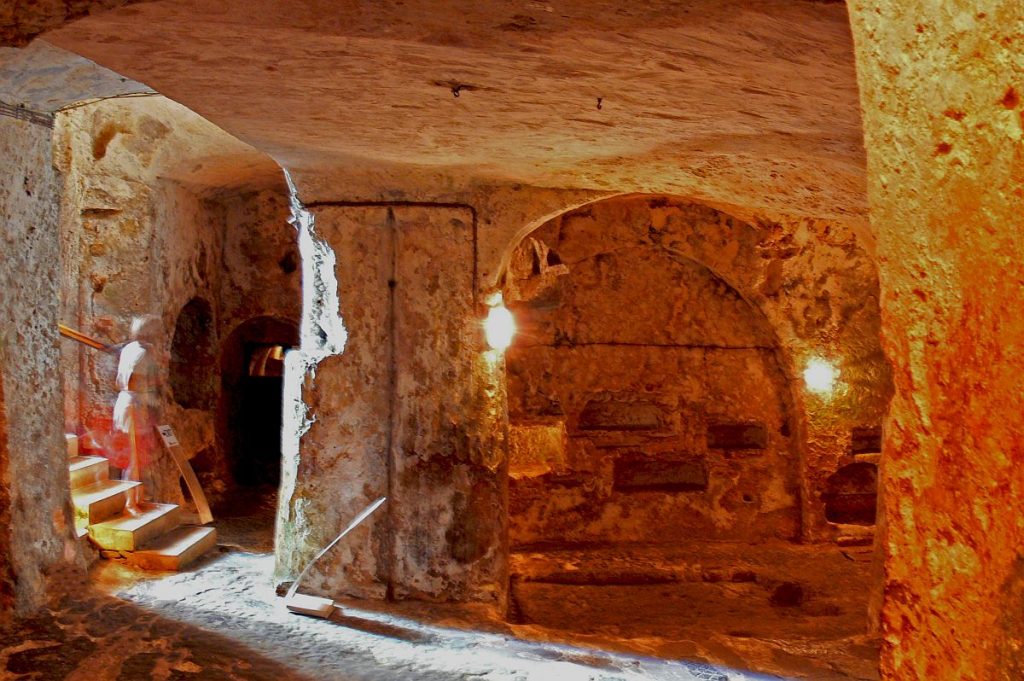
Catacombs embody a dark, but still unique, part of human history. For centuries, they have been used as burial places. By definition, catacombs are man-made underground passages for different religious practices. Although we tend to think of long passages, practically any room used as a burial place is a catacomb.
The word catacomb comes from the Latin “ad catacomb”, referring to the rooms in Rome. Started by the Romans, Christians eventually took over the practice of creating catacombs with the idea that death is only a period of sleep, and the dead will rise again.
Every year, millions of people travel to different parts of Europe to visit the mysterious catacombs where countless bones are kept. While it may seem like a scary experience, visiting such places allows visitors to learn about historical burial practices.

Here is our list of the 5 most fascinating catacombs in Europe:
Catacombs in Paris. Undoubtedly, the most famous catacombs on the Old Continent are those of the City of Lights. The underground rooms, dating from the 1770s, were created in an effort to reduce the overwhelming number of overland cemeteries. They house more than six million human bodies inside! Before becoming such a popular tourist attraction, the site was used to host private parties, concerts and events.
Numerous rumors have circulated around the Paris catacombs over the years, including ghost stories. This is not surprising at all! The network of underground passages is so large, complex and scary that you can easily get lost in it. That is why rumors of trapped souls still shouting for help are probably inspired by real facts!
Catacombs in Rome. Rome hosts many catacombs. There are at least 13 locations where such underground graves are found in the Italian capital. And the catacombs in Rome are of great importance, for several reasons. In addition to the large number of human remains that they house, they contain priceless Christian relics, paintings, sculptures and various artifacts. During the Roman Empire, only the rich could afford to buy land or space to be buried, so that the people of the lower class would be placed, after death, in the catacomb rooms.
Catacombs were abandoned in Rome in the 10th century, and in the 16th century AD and began to reappear after many discoveries that occurred until the 1950s. While many are open to view, some have been closed due to the risk of radon (radioactive gas emitted from decomposition of bodies).
Catacombs in Rabat, Malta. Under the modern city of Rabat in Malta (formerly the ancient Roman city of Melita) there is an extensive system of underground tombs carved in rocks, dating from the fourth and ninth centuries AD. Unlike most other catacombs in the Mediterranean and, in fact, from Worldwide, the tunnels in Rabat were used to bury Jews, Christians and pagans, with no visible divisions between groups.
Visiting them, you will see inside the large tables used for food during the funeral ceremonies, as well as several canopies, some of them inscribed with mysterious illustrations and messages (where archaeologists still work to interpret the meanings). The most important catacombs in Rabat include those of St. Paul, St. Agatha and Tad-Dejr.
The catacombs under the St. Stephen’s Cathedral in Vienna. These long, dark and cryptic catacombs can only be visited with an accredited guide. The underground burial site is just below the famous and impressive St. Stephen’s Cathedral in the Austrian capital. Like all the other catacombs on this list, those in Vienna have walls adorned with human bones, with a terrifying image.
The catacombs under St. Stephen’s Cathedral served as the burial place of Austrian leaders, members of the clergy and high rank nobility. The remains of 11,000 human bodies are found in the old crypt, dating back to the 1700s. In addition, only a few lights are installed underground, which is another reason why a guide for visiting the catacombs is needed.
Catacombs in Brno, Czech Republic. Some routine archaeological excavations carried out as part of a 2001 construction project led to an unexpected discovery in the city of Brno in the Czech Republic – an underground house full of skeletons. It is estimated that more than 50,000 sets of human remains have been crammed into this site.



Be the first to comment